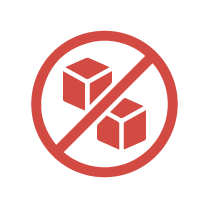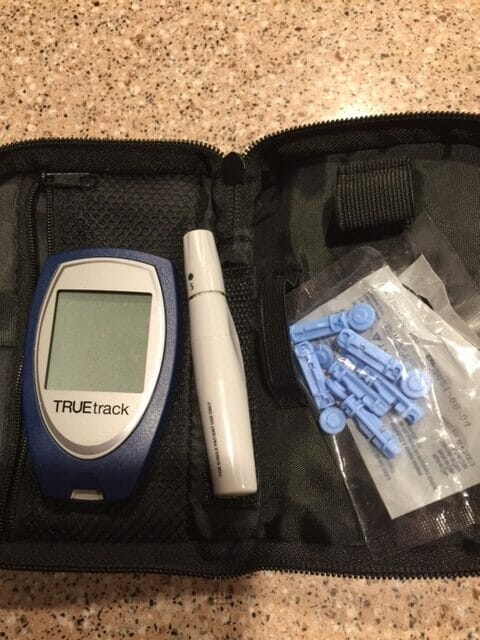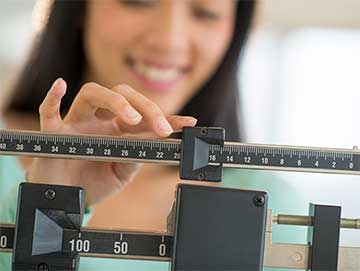 Do you know your blood sugar? Knowing how your body responds to a particular food, meal, activity, or even thought can be one of the most valuable skills you’ll ever learn. Measuring your blood glucose will give you this feedback, and it’s really easy to learn and do.
Most people think measuring blood sugar is only for diabetics. Let’s change that belief! Juts like you know your blood pressure or cholesterol, I recommend my clients track their blood sugar and I even have a chart for them to complete to track the levels.
All you need is an inexpensive glucose meter (approximately $10 – $20 at most US discount pharmacy chains). The replacement strips can be pricey, so before you decide which meter to buy, check out the price of the strips. Walmart sells a glucometer for $10 and strips for $17.
Directions for Measuring Blood Sugar (Estimated time, start to finish: Less than 2 minutes)
Do you know your blood sugar? Knowing how your body responds to a particular food, meal, activity, or even thought can be one of the most valuable skills you’ll ever learn. Measuring your blood glucose will give you this feedback, and it’s really easy to learn and do.
Most people think measuring blood sugar is only for diabetics. Let’s change that belief! Juts like you know your blood pressure or cholesterol, I recommend my clients track their blood sugar and I even have a chart for them to complete to track the levels.
All you need is an inexpensive glucose meter (approximately $10 – $20 at most US discount pharmacy chains). The replacement strips can be pricey, so before you decide which meter to buy, check out the price of the strips. Walmart sells a glucometer for $10 and strips for $17.
Directions for Measuring Blood Sugar (Estimated time, start to finish: Less than 2 minutes)
- Wash your hands. Invisible debris on your fingers can result in erroneous readings.
- Avoid the use of alcohol hand cleaners/sanitizers, especially if you’re checking regularly. It can dry your fingers and cause calluses.
- Rinse your fingers under warm water to increase blood flow to the area.
- Prepare your supplies.
- Spring-loaded device with sterile lancet for sticking your finger
- Glucometer
- Test strips
- Tissue paper or cotton ball for blotting blood
- Choose a location to get a blood sample. Rotate areas to prevent calluses.
- Fingers near your nails
- Between the first and second joints of any finger
- Fleshy pads of your fingertips
- Collect blood sample a. Cock the spring-loaded device and prick any finger. Follow the specific instructions provided by the manufacturer.b. Gently squeeze your finger. Avoid using a pumping action. c. Touch the blood to the test strip.
- Obtain the glucose reading. a. The Glucometer will blink or count down once the blood has been absorbed by the strip. b. Record the number from the Glucometer on your form.
- Cleanup. a. Discard used lancet. b. Discard any blood-soaked tissues or cotton balls by flushing down the toilet to prevent contaminating any others with your blood.




























